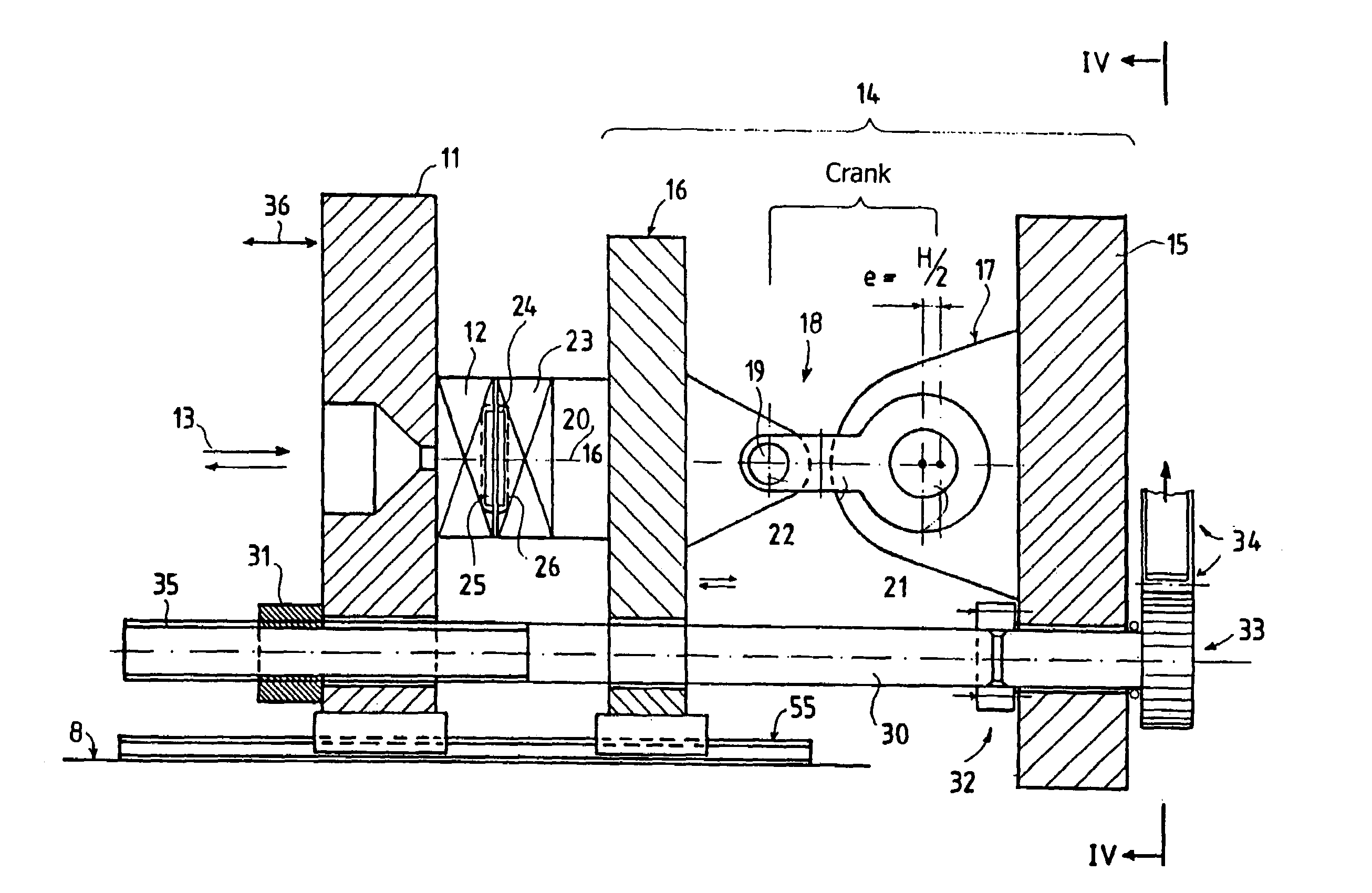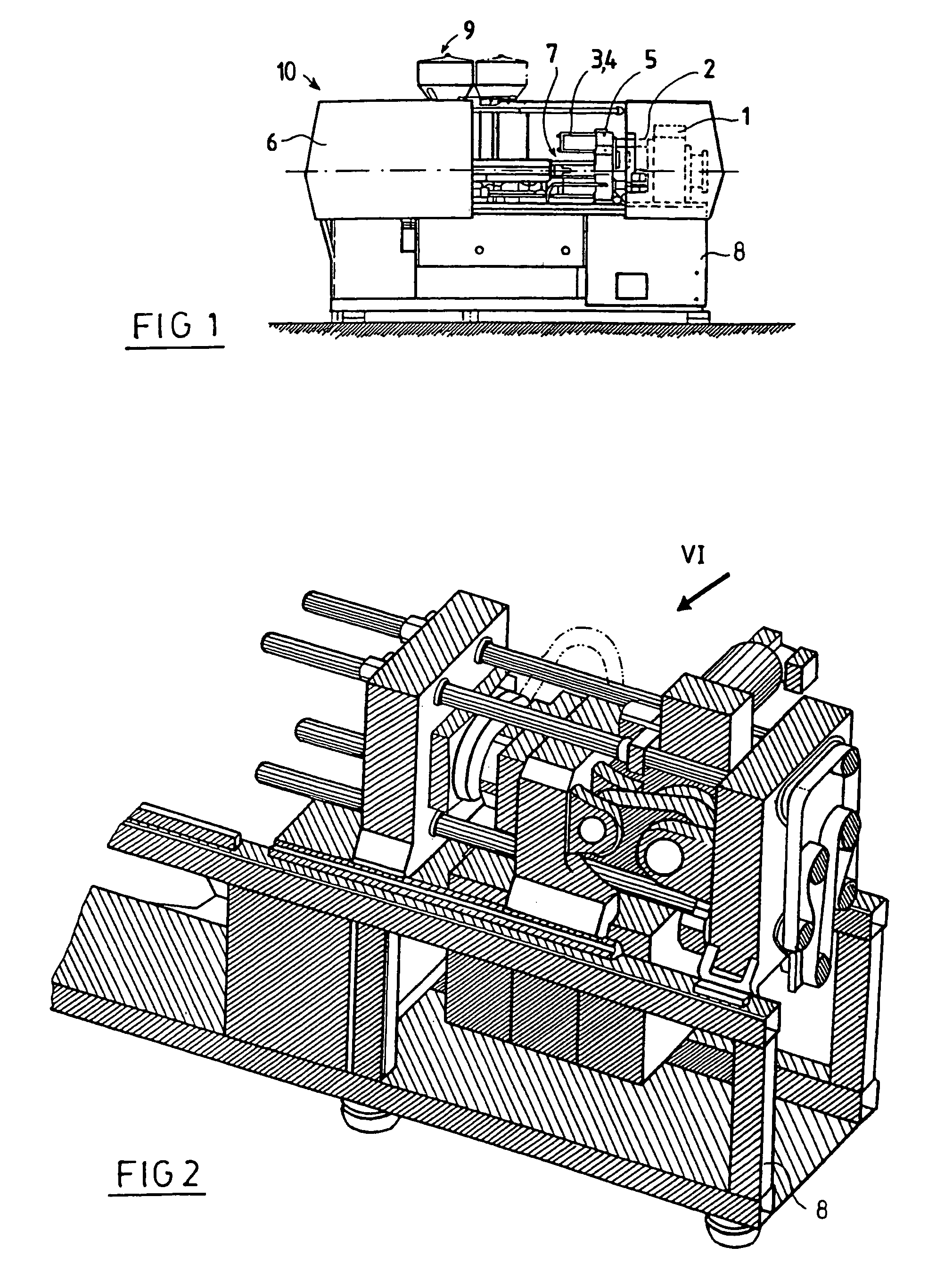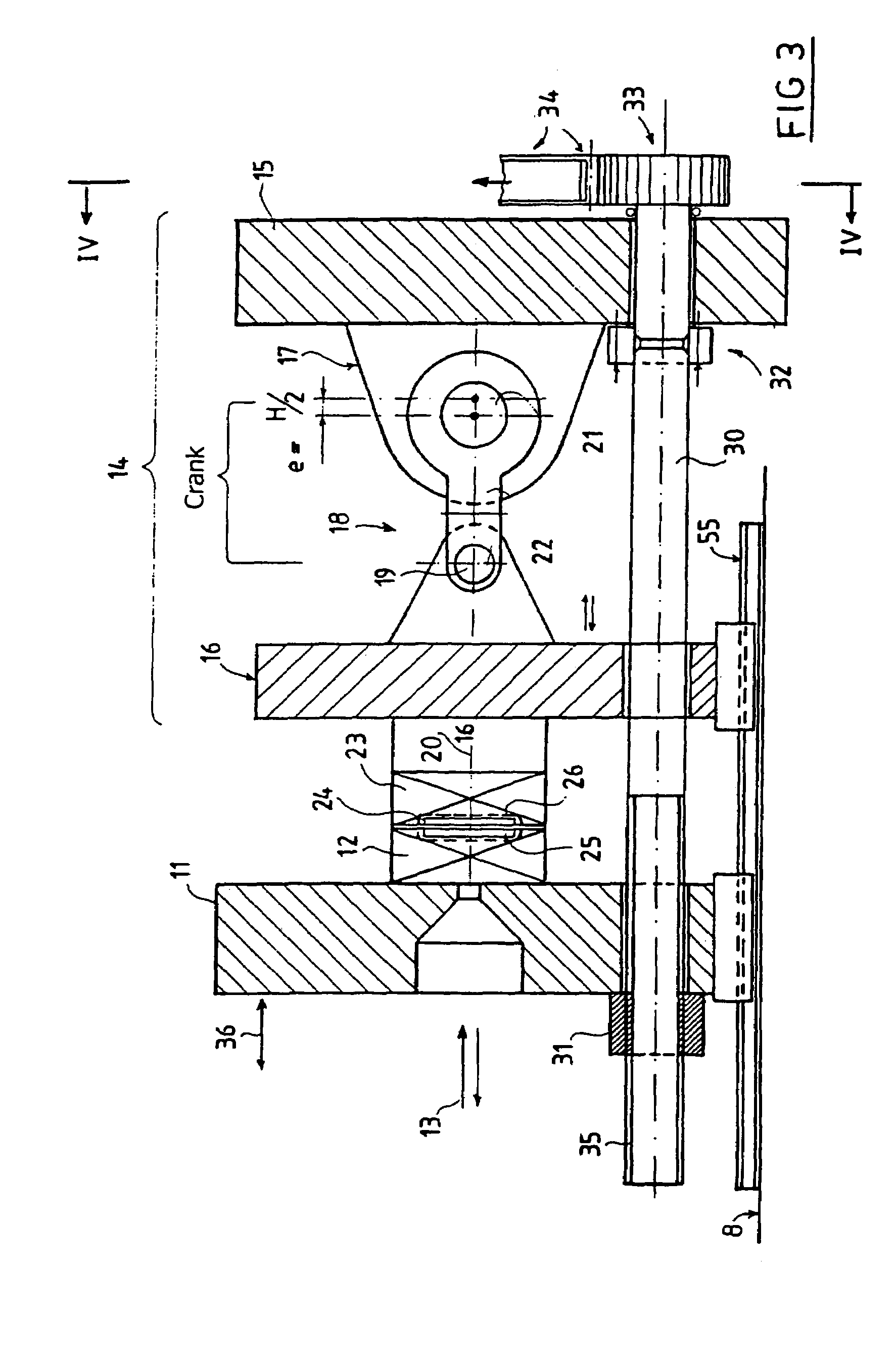Mold closing unit
a technology of closing unit and mold, which is applied in the field of mold closing unit, can solve the problems of inability to ensure the lubrication of hinge pins, the inability to change mold inserts at the same time, and the inability to shorten the working stroke of electromechanical injection molding machines having toggle systems, etc., and achieve the highest quality, the effect of shortest possible dry run time and the highest possible productivity
- Summary
- Abstract
- Description
- Claims
- Application Information
AI Technical Summary
Benefits of technology
Problems solved by technology
Method used
Image
Examples
Embodiment Construction
[0032]This novel solution makes it possible to design an entire machine for use in a clean room and to combine the advantages of machines equipped with a toggle system as well as those of machines equipped with fully hydraulic mold closing. An important advantage of the novel solution is that the dry run time can be designed to be extremely short, e.g., less than 0.3 second. In addition, even in the servicing stroke, movement with an accuracy in the micrometer range (thousandths of a millimeter) is guaranteed, so that the reproducibility of the closing movement operation, once it has been set, is fully guaranteed. The crank mechanism or eccentric drive also has the enormous advantage that the working stroke can be as small as desired, e.g., a crank radius of approx. 25–35 mm can be achieved easily.
[0033]With the solution according to FIG. 1, a CD can be produced in 3.7 seconds or less with the known state of the art. The known solution by the present applicant is a fully hydraulic m...
PUM
| Property | Measurement | Unit |
|---|---|---|
| stroke distance | aaaaa | aaaaa |
| opening distance | aaaaa | aaaaa |
| radius | aaaaa | aaaaa |
Abstract
Description
Claims
Application Information
 Login to View More
Login to View More - R&D
- Intellectual Property
- Life Sciences
- Materials
- Tech Scout
- Unparalleled Data Quality
- Higher Quality Content
- 60% Fewer Hallucinations
Browse by: Latest US Patents, China's latest patents, Technical Efficacy Thesaurus, Application Domain, Technology Topic, Popular Technical Reports.
© 2025 PatSnap. All rights reserved.Legal|Privacy policy|Modern Slavery Act Transparency Statement|Sitemap|About US| Contact US: help@patsnap.com



